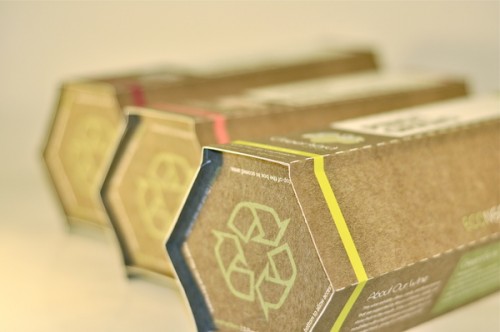Sustainable package design is certain to be a major buzz this week at Expo West. Improving the environmental friendliness of packaging is a hot topic for all professionals associated with the food and beverage industries.
As today’s consumer packaged goods companies (CPGs) move closer to sustainability or “green” packaging, there are many factors that drive decisions, from petroleum use and government policies to sourcing raw materials, through the life cycle of the product, and all are proving to be challenging and complex.
If you missed the special report about sustainable packaging, published earlier this year by Anne Marie Mohan, editor of Greener Package, here is a recap highlighting the fundamental areas to consider before you make incremental changes to improve your packaging sustainability and scorecard.
Mohan suggests that by making small but significant changes to various components of your packaging, you can reduce environmental impact and at the same time achieve cost savings for manufacturers and consumers alike.
In Mohan’s report, she lists 10 specific areas to consider for improved packaging sustainability:
- Use a life-cycle approach to package design – Utilizing the LCA software tools available will help packaging designers evaluate and make better-informed material decisions.
- Evaluate each component of your package – Using less material without compromising the integrity of the product can help save precious natural resources. New technology is offering more options and better packaging components. As package-to-product ratio improves, so too will its carbon footprint.
- Consider new alternatives for distribution – Waste at the retailer level can be minimized if packagers utilize machinery and new technologies that require fewer materials to create multi-packs, bundles, and pallets.
- Look for opportunities to make your packaging reusable – Searching for ways to repurpose a package can reduce water, energy, and diesel consumption – all contributing to the environmental impact.
- Consider changes in your product – Rethinking product formulations that allow for smaller, more sustainable packaging can reduce the resources needed from the factory to retail shelf. Smaller packaging leads to less waste in our landfills, and fewer greenhouse gas emissions from transporting shipments.
- Whenever possible, design for recyclability – Consider new technologies such as molded-pulp packaging that allows formerly non-recycled products to be recycled. Making products easy for consumers to disassemble and recycle benefits everyone.
- Employ packaging strategies that encourage product consumption – Making packaging that helps the consumer use the majority of the product in the container reduces the amount of food wasted each year.
- Know where your packaging materials come from – With consumer demand for transparency on the rise, using non-genetically modified crops is a core value of sustainability. Using responsibly sourced packaging materials contributes to brand authenticity and loyalty, and reduces the risk for criticism.
- Evaluate your distribution system for space-saving opportunities – Wasted space in packaging results in excess materials, transport, handling, and storage. Maximizing load density minimizes environmental impact.
- Consider materials made from renewable feedstock – This is a rapidly growing area. From bioplastics made from corn or sugarcane, to packaging constructed from mushroom roots, new packaging materials and technology are emerging constantly. New technologies that promise to make packaging “disappear” are an alluring idea, but some scientific experts charge that the methodology and environmental safety factors may not live up to their claims.
While manufacturers desire high sustainability scores on their packaging, generally speaking it is not something that can be measured easily. Sustainability is not an object, or state of being, but rather a process. We can start that process with incremental change and by making better decisions that have the least impact on our environment.
Read Mohan’s full report at greenerpackage.com.


